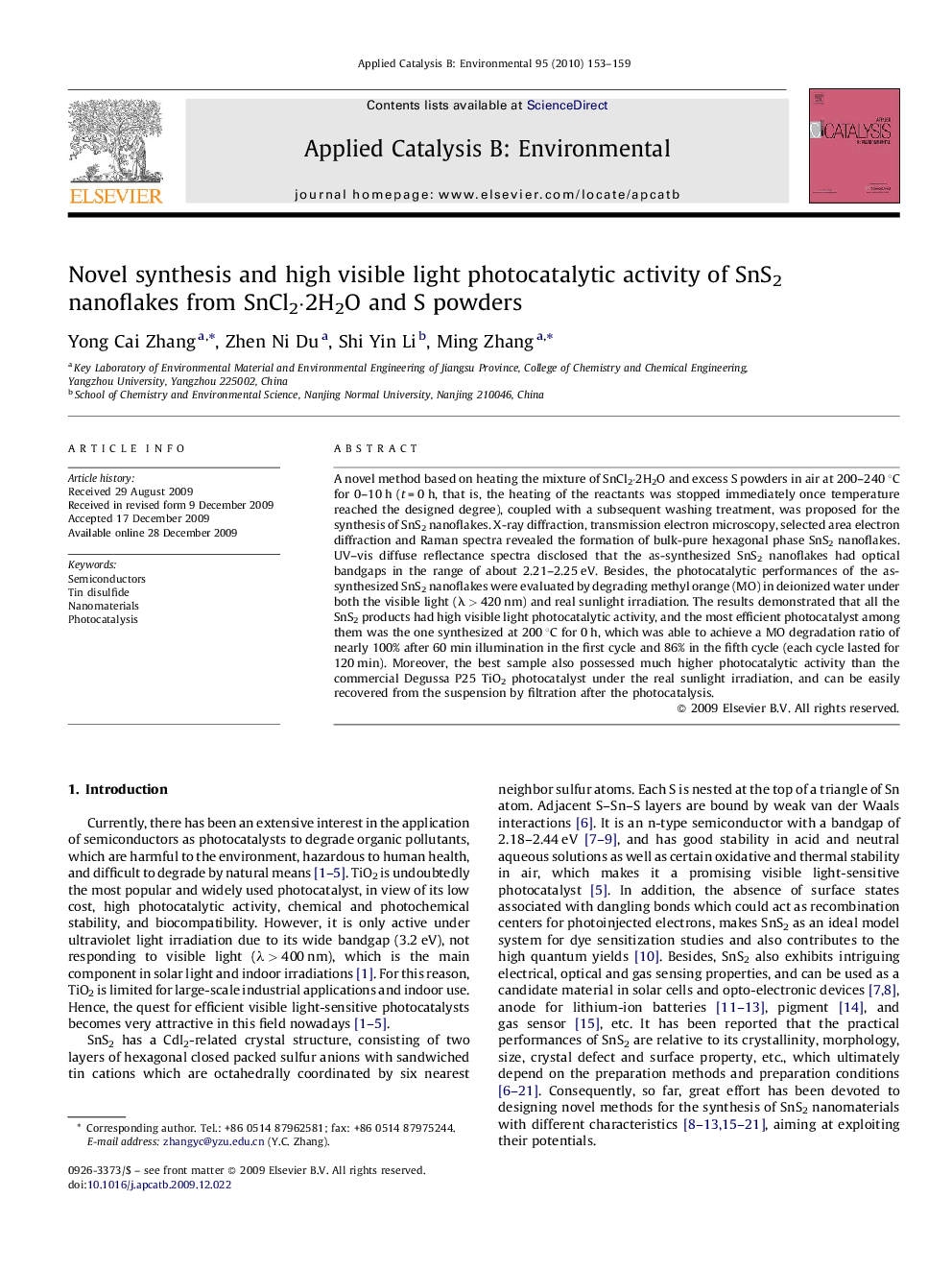| Article ID | Journal | Published Year | Pages | File Type |
|---|---|---|---|---|
| 47550 | Applied Catalysis B: Environmental | 2010 | 7 Pages |
A novel method based on heating the mixture of SnCl2·2H2O and excess S powders in air at 200–240 °C for 0–10 h (t = 0 h, that is, the heating of the reactants was stopped immediately once temperature reached the designed degree), coupled with a subsequent washing treatment, was proposed for the synthesis of SnS2 nanoflakes. X-ray diffraction, transmission electron microscopy, selected area electron diffraction and Raman spectra revealed the formation of bulk-pure hexagonal phase SnS2 nanoflakes. UV–vis diffuse reflectance spectra disclosed that the as-synthesized SnS2 nanoflakes had optical bandgaps in the range of about 2.21–2.25 eV. Besides, the photocatalytic performances of the as-synthesized SnS2 nanoflakes were evaluated by degrading methyl orange (MO) in deionized water under both the visible light (λ > 420 nm) and real sunlight irradiation. The results demonstrated that all the SnS2 products had high visible light photocatalytic activity, and the most efficient photocatalyst among them was the one synthesized at 200 °C for 0 h, which was able to achieve a MO degradation ratio of nearly 100% after 60 min illumination in the first cycle and 86% in the fifth cycle (each cycle lasted for 120 min). Moreover, the best sample also possessed much higher photocatalytic activity than the commercial Degussa P25 TiO2 photocatalyst under the real sunlight irradiation, and can be easily recovered from the suspension by filtration after the photocatalysis.
